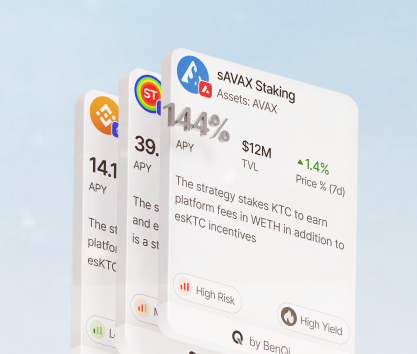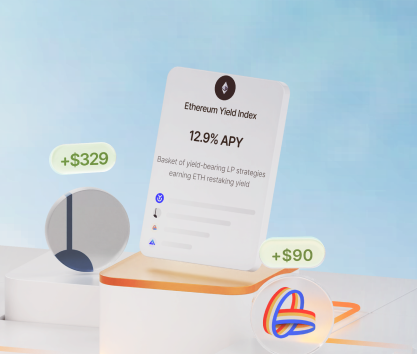If high returns and innovative investment options interest you, we strongly recommend reading this article that describes one of the most capital-efficient ways to make money in the crypto market. Leveraged yield farming is often cited as an excellent alternative to active retail trading. Staking and lending can be quite profitable yet do not wow investors with outstanding profits. To improve gains, contemporary crypto enthusiasts take on higher risks for much greater rewards.
What is leveraged yield farming?
In the 2010s, the crypto industry was all about arbitrage trading and market making. Opportunities for diversification were scarce and the market offered limited investment options to participants. Over time, staking, lending, and automatic market-making started gaining popularity among conservative investors seeking consistency and predictability instead of chasing coins that have a small chance of “going to the moon”.
The term yield farming emerged closer to the 2020s. According to Alchemy, the crypto industry had close to 70 reputable yield farming platforms in 2023. Over 100 different projects have been on the radars of active crypto enthusiasts throughout the last five years. Here are some examples of using funds to receive rewards and consistent returns:
- Lending. The DeFi ecosystem has plenty of different ways to engage in trading and asset swapping. Many retail traders require additional capital to work effectively. They often borrow tokens to continue their operations without any interruptions. You can lend these assets and receive interest just like in the case with traditional banks.
- Liquidity provision. Exchanges need money to ensure that market participants can quickly enter and exit positions. High trading volumes and quick settlement of operations attract users and ensure that all traders enjoy a better experience. Investors can provide liquidity by locking in equal amounts of two assets (for example, USDT/ETH) and receive incentives from exchanges for giving them assets to work with.
- Yield farming. Exchanges and lending platforms want higher TVLs (total value locked) to avoid any issues with low liquidity and insufficient funds in general. Users are incentivized and rewarded for keeping their capital locked on platforms through the issuance of LP (liquidity provider) tokens that can be further staked to receive returns on all coins.
High-yield crypto farming is achieved through a variety of methods. Investors can do everything manually and hunt for opportunities where they can receive interest in base and LP tokens simultaneously to significantly increase potential gains. Tools like auto-compounding and actively trading staked LP tokens like stNEAR are frequently used to further boost profits.
Despite the best efforts from investors, even so-called extremely high-yield options with over 50% APY may still feel underwhelming compared to what a lucky retail trader can make in a month if Fortune has their back. Maximizing returns with leverage is an approach that some investors take when seeking higher return rates.
As in the case of any form of borrowing, risks of leveraged positions are elevated and can be an issue for people who usually avoid dangerous investments.
Risks and benefits of using leverage in yield farming
Increasing the size of staked capital is obviously advantageous as bigger investments produce bigger returns. Here are the benefits of using leverage in yield farming:
- Higher returns. Borrowing additional coins to increase returns is a good strategy if you calculate the cost of credit and ensure that profits outpace interest payments on loans. A yield farmer can invest $1000 worth of their tokens and borrow an additional $2000 to effectively 3x their returns. DeFi Pulse reports that leveraged farming produces up to 3 times the returns of non-leveraged investments.
- Access to high-yield programs. In some cases, investors cannot achieve higher profits since they do not have the necessary initial capital to qualify for a certain investment opportunity. For instance, ETH staking is possible for individuals only if they have at least 32 ETH which is too much for the vast majority of crypto enthusiasts.
- Faster compounding growth. All rewards can be immediately reinvested to further boost profitability. Having a larger starting capital significantly speeds up the compounding effect and allows investors to increase their portfolios at a rapid pace that would be unachievable with a smaller initial investment.
- New diversification options. Borrowing is useful in cases when you want to spread capital across multiple platforms for more flexible portfolio management. Note that diversification through leverage is a highly complicated field with researchers McCann and Luo of LSCG reporting that portfolios using it often suffer from a significant risk increase (from 62% to 80% using their estimates and simulation formulas).
Since risk management in leveraged yield farming is a crucial area of interest for any investor, understanding the dangers of this investment approach is more than just important. What issues should you be aware of?
Impermanent loss. All liquidity pools use automatic rebalancing to ensure that stakes have a 50/50 ratio at all times. Imagine that you have invested in an ETH/USDT pool. If the price of ETH goes up, the smart contract will rebalance the composition of your stake to reflect the price change. Tokens will be exchanged using current rates and gas fees may be extracted too leaving you with a smaller overall stake. It can be a huge issue. For instance, over 50% of all Uniswap investors lose money due to this phenomenon.
Liquidation risk. Smart contracts are written to protect uninvolved capital holders from taking on the debt of a borrower. If the farming pair dips to a new low where the collateral is insufficient to cover the loan, it will be automatically liquidated leading to significant losses. The principle here is close to the concept of “margin call” from tradfi.
Best practices for managing risk in leveraged yield farming
One of the biggest issues for the whole crypto industry is hacking and cyber security in general. Despite the best efforts from the community, smart contracts are still significant weaknesses in blockchain architecture. They often introduce bugs and can be exploited by bad actors. Accounting for this particular risk is close to impossible.
You can reduce the portfolio exposure to other factors:
- Use conservative leverage. Even if you think that there is a chance that you will easily cover all opportunity costs and then some, it is a good idea to start with a smaller loan to test how your system works.
- Diversify investments. As mentioned previously, correctly spreading capital across leveraged positions is difficult even for experienced investors. Nevertheless, it is still a sound practice to have stakes on different platforms and farming pairs.
- Do not forget about auto-compounding. Growing your stake through reinvesting is a huge part of successful yield farming APY with leverage. Use reliable services that automatically restake rewards and ensure steady growth.
- Use hedging strategies. Delta-neutral yield farming is a thing and can be quite useful for investors with leveraged positions. Hedging with derivatives or on-chain borrowing are good ways to reduce exposure to risks.
Calculating costs associated with taking on a loan is also an important part of risk management. Yield farming with borrowed funds can be very rewarding in the long run if you do not get too overzealous and never forget about simple tricks like the ones above. Slowly increase the share of debt in your capital, reassess positions regularly, and use advanced hedging techniques.
Understanding leverage in DeFi yield farming is quite important for the long-term success of your investment operations. Remember that all loans come with interest payments attached and APYs must cover them on top of easily absorbing opportunity costs (impermanent losses).
How to maximize returns with leveraged yield farming
DeFi (Decentralized Finance) is a complicated digital landscape. Finding the right path to success is challenging even for veterans. We strongly suggest following these simple steps to get started:
- Learn everything there is to learn about leveraged liquidity mining. Understand how smart contracts work, how LP tokens can be used to your advantage, and how to calculate the cost of investing.
- Decide which coins you want to work with. Volatile tokens may generate large impermanent losses and cause premature liquidation of positions. Starting with consistent digital assets is a good idea.
- Pick a good liquidity pool. With over 60 such platforms offering crypto leverage farming, the search for a good project can be long and frustrating. We believe that the end justifies the means. Invest time and effort into testing different pools before fully committing.
Follow risk management tips. We have already discussed what you can do to limit portfolio exposure. There are other methods that you can employ.
Picking the right platform where you can engage in manual and automated leveraged yield farming can be quite challenging. This sector of the DeFi ecosystem has dozens of interesting Dapps. We do not want to influence your opinion. Take a look at our list of decentralized applications that may catch your attention and make a decision after testing them personally.
Apricot Finance
Deployed on Solana, this Dapp is a great choice for investors interested in working with innovative financial products. Apricot Finance offers several features that make it stand out from the crowd:
- Apricot Lend is a typical lending crypto service where you can act as a supplier or borrow against other digital assets.
- X-Farm is a cross-margin leveraged yield farming service allowing users to deposit any kind of supported assets and borrow tokens to stake.
- Apricot Assist is a feature aimed at experienced investors looking for reliable ways to avoid sudden liquidation through assisted deleveraging.
The development team is backed by the Solana Foundation, Delphi Ventures, CMS, and many other large institutions. If you are looking for a good cross-chain platform where you can amplify gains, this Solana-based Dapp is an excellent choice.
QuickSwap
This clone of Uniswap deployed on the Polygon blockchain is a popular decentralized exchange offering a wide range of features aimed at retail traders and investors seeking new ways to earn crypto. QuickSwap offers rapid swapping of assets and access to a rich variety of farms.
Experienced investors can use native “perps” (derivatives) to hedge against risks associated with staking tokens to achieve delta-neutral portfolio performance. The diversity of available investment options makes this particular platform one of the best choices for newcomers and veterans alike.
Alpaca Finance
Launched on BSC (Binance Smart Chain), Alpaca Finance is a great place for crypto investors to look for exciting yield farming opportunities. Fully owned by the community, it is a democratic ecosystem where collective governance ensures that the development and smart contract designs benefit end users.
As of the time of writing, TVL is close to $54 million in two Dapps: AF1.0 and AF2.0. Depending on the amount staked and market conditions, you can expect to earn up to 12% APY on Alpaca/BUSD pair.
You can engage with different products from Alpaca Finance:
- Lend or borrow digital assets to increase gains through leverage.
- Use automatic market-makers for neutral stablecoin/stablecoin trading pairs.
- Use ready-made strategies that implement elements of delta-neutral exposure and principal protection.
Aave
Any list of platforms for leveraged yield farming would be incomplete without mentioning at least one deployed on Ethereum. Aave is a good choice for people who enjoy working with Ethereum for its simplicity and convenience. It is a cross-chain solution where you can easily access digital assets and investment opportunities on Ethereum, Polygon, Gnosis, Avalanche, Arbitrum, and others.
Aave has a robust community treasure with over $94 million in assets spread across $AAVE, $DAI, $USDT, and $USDC holdings. Numbers look good and healthy for a project that hopes to stay among crowd favorites for as long as possible.
The security of the platform is also quite impressive as the open-source nature of the development process ensures effortless auditing and community support. The platform also has a solid bug bounty program inviting experts from all over the world to participate in the hunt for vulnerabilities.
The main takeaway
It seems that the future of the crypto industry is in the hands of developers building innovative financial products in the DeFi sector. Leveraged yield farming with all its complexity is a great example of something that introduces sophistication without overwhelming regular joes with more than they can chew. Increasing returns with borrowed funds is a straightforward concept that makes investing more accessible compared to tradfi and standard staking. If you haven’t yet, it is a great moment to try!









